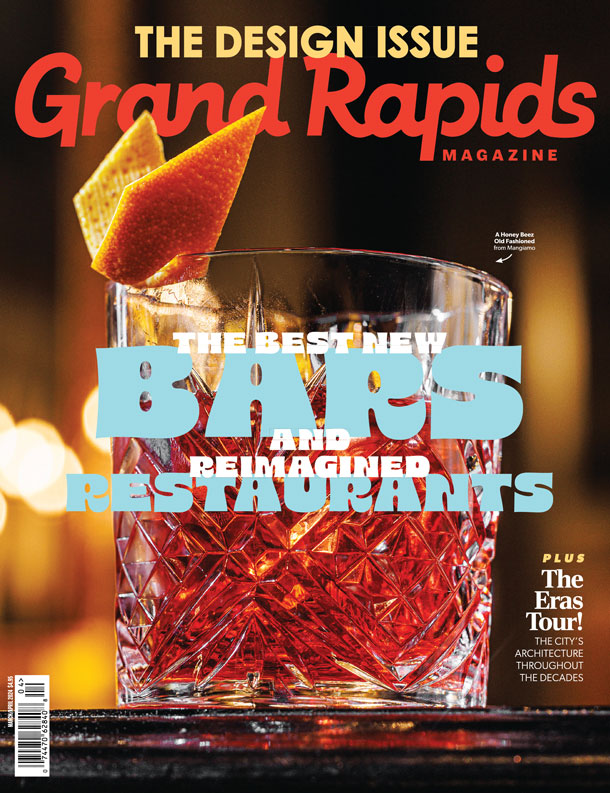A significant factor in the growth and evolution of the city has been the private-public partnerships that have popped up. Perhaps the most consequential of those partnerships stem from the Grand Action Committee, a coalition of several of the most prominent families in West Michigan. The organization was the main driver behind transformative projects like Van Andel Arena, DeVos Place and the Downtown Market.
The core three of Grand Action — Dick DeVos, David Frey and the late John Canepa — hoped they could push the city to a new level.
They certainly helped.
“Growth in West Michigan isn’t by luck. It’s by our investing in our future,” Frey told Grand Rapids Magazine in 1993. “This is another significant step forward that doesn’t just reinforce but clarifies the relationship between the public and private sectors. We’re continuing to fulfill what we had planned for us — we’re just doing what comes naturally.”
After Canepa died in 2018, the original Grand Action dispersed, or at least took a pause. Frey told GRM this summer they hoped a new generation of leaders would emerge to drive the next phase of growth.
“We waited, but we waited not too terribly long, maybe 12 to 18 months,” Frey said. “But there was a sense of urgency growing in the city that we needed to restructure Grand Action with a new set of leaders.”
Previously, Frey had been the “today”of a trio of leaders meant to represent the “yesterday, today and tomorrow” of Grand Rapids. Now, he admits, he’s the “yesterday.” He now takes an emeritus-type role, with DeVos being joined by Carol Van Andel and Tom Welch, the West Michigan region president for Fifth Third Bank.
The organization also has a new executive director, Kara Wood, who replaced longtime director Jon Nunn.
Wood was most recently associate vice president of community partnerships at Western Michigan University, but also spent more than a decade at the city of Grand Rapids in community planning.
“I’m really appreciative of Grand Action’s proactiveness in basically laying what
it takes to get the city to the next level,” Wood said. “There is an expectation for
me, because they’ve outlined it to the community, and if we’re going to elevate the city, they’ve given us a roadmap to follow. Grand Action, being proactive leaders, they advance some elements quickly to ensure success. I wanted to support and continue to support those goals.”
With the new leadership in place, Grand Action 2.0 already has big plans. The top priority is a riverside amphitheater — a $116 million, 12,000-seat venue that could host a variety of touring acts coming through the region. The project has passed multiple hurdles, including the Grand Rapids City Commission approving the $24.3 million sale and a commitment of $30 million in state funding. The project also will include more than 1,000 housing units and a park.
Frey said the state support is key as Grand Action continues to work toward fundraising for the project that would activate a major downtown site, 201 Market Ave. SW, that has been talked about for years.
Beyond that, there’s even bigger aspirations. DeVos said there are discussions with Major League Soccer to bring a minor league soccer team to Grand Rapids. That project would include a stadium, potentially on the West Side, that also could serve other community athletic and entertainment projects.
“The continued growth of Grand Rapids, in part through our projects, has validated itself,” DeVos said. “It has put us on lists, so much so that MLS will not only tolerate a call from us, but call us.”
Then, there’s an aquarium. While the city might be in competition with Muskegon for that asset, Frey said he hopes Grand Rapids could soon have an aquarium near or on the Grand River that becomes a regional attraction.
Another project that’s “not quite ready for primetime,” according to Frey, but that was circulated prior to the COVID-19 pandemic, was a convention-sized hotel to complement DeVos Place. A hotel with 650 rooms or more would allow Grand Rapids to attract more and bigger conventions.
All these projects could serve as catalysts for private developers to bring in new businesses, residential buildings and other community assets that make the city a great place to live, work and play.
Back in the early 1990s, as Grand Action was getting off the ground, even the original trio of leaders had no idea what their commitment to the city was setting the table for.
“I would love to see this serve as a catalyst toward a far more residential downtown,” DeVos said in the 1993 article. “An arena in the Heartside area — will this prompt bars to spring up? I guess I don’t think so. But I believe we should look at it as it evolves in reality, not in our minds.”
The article also noted studies suggested the arena might bring a “minor league hockey team, large touring acts, prominent entertainers and a host of family shows.”
Well, the Grand Rapids Griffins are a two-time American League Hockey champion that has produced dozens of players that went on to play for the Detroit Red Wings and other NHL organizations. The arena also is one of the most successful venues of its size, regularly placing among the top-5 grossing mid-sized venues globally, according to Billboard.
Once completed, restaurants and bars did pop up around Van Andel Arena — including The B.O.B. and the line of entertainment venues that run down Ionia Avenue. Without the arena, it is unlikely some of the big developments of the past decade would have come to be, either, like Studio Park and Arena Place — it’s literally in the name!
DeVos said another signal of Grand Action’s success is that the model has been used in other West Michigan communities and the development of the Gerald R. Ford International Airport.
With the new Grand Action projects, Frey thinks Grand Rapids can take another step to become a thriving city. As new catalytic developments, they also could attract even more residential buildings and potentially more corporate headquarters that mark a vibrant downtown as the place to be, rather than in surrounding suburbs and bedroom communities.
“Momentum is important,” Frey said this summer. “It’s already a great mid-sized city halfway between Chicago and Detroit. Our goal is not to be a Chicago, a Detroit, but a mini version of both with the best features of both.”








Facebook Comments